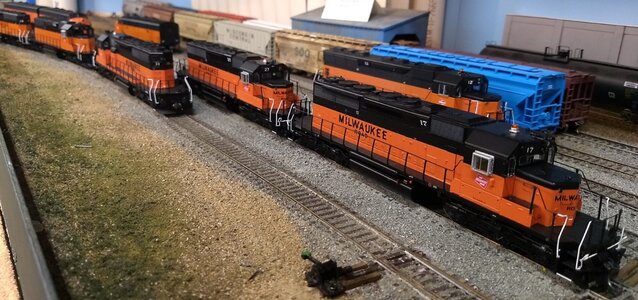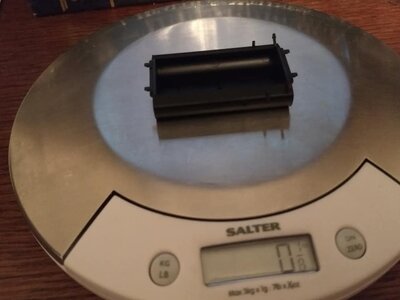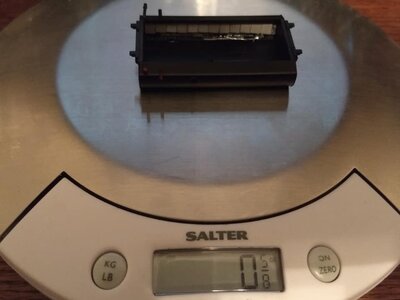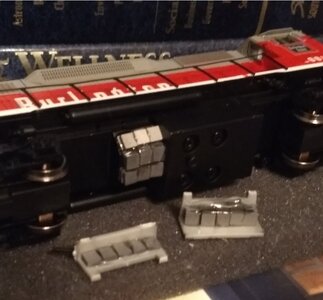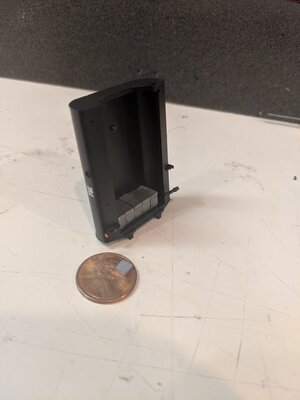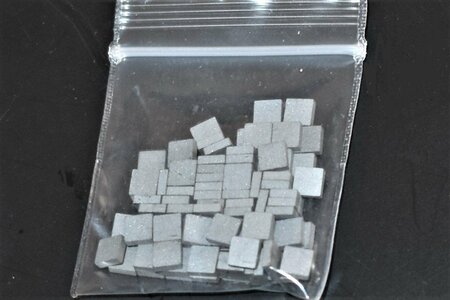This is not meant to be a detailed analysis of this subject,...there are a number of those in other subject threads on various forums
Rather this a few general observations of the subject I experienced recently.
Yesterday I was running some experiments with running a few Rivarossi Allegheny locos around the recently new loop of the bottom deck of my layout. I had advertised 1 or 2 in my inventory for sale. I had some questions from potential buyers about their running qualities. I also wanted to satisfy some of my own questions about their pulling power.
The 'test track' is my newly laid code100 atlas track around the perimeter of my 12x16 foot train shed. Regrettably it is not all level track, but rather rises at a grade of about 4% on a stone arch viaduct on 2 sides of the room (needed to provide clearance for double-stack containers to run under it at its highest part. This makes things a bit more challenging, but its about the minimum grade I could use in my relatively small layout. My trains are going to have to run this grade, both while circling the bottom deck, AND when entering the helix structure for a trip to the top deck.
...before the track was laid


This is just 2 of the Alleghenys I was playing with, one is my most treasured one with heavy weathering, and the other a more lightly weathered one. ( I also discovered an electrical pick-up problem on one of the others, that I documented over on another subject thread).


BTW, none of my Alleghenys have the optional traction tires..
I dragged out some misc freight cars I had, choosing those that had metal wheels. I was real surprised at the wheel slipping I experienced at the top of the grade with only 9-10 cars in tow ! I subsequently added some weight to the locos (1oz,.. then 1.25 oz) and that improved the situation. I'm not so sure I could fit much more than that amount of weight into those boiler shells, so I didn't bother to go further at this time.

Is my track grade really affecting the pulling power of these big locos that much??
Rather this a few general observations of the subject I experienced recently.
Yesterday I was running some experiments with running a few Rivarossi Allegheny locos around the recently new loop of the bottom deck of my layout. I had advertised 1 or 2 in my inventory for sale. I had some questions from potential buyers about their running qualities. I also wanted to satisfy some of my own questions about their pulling power.
The 'test track' is my newly laid code100 atlas track around the perimeter of my 12x16 foot train shed. Regrettably it is not all level track, but rather rises at a grade of about 4% on a stone arch viaduct on 2 sides of the room (needed to provide clearance for double-stack containers to run under it at its highest part. This makes things a bit more challenging, but its about the minimum grade I could use in my relatively small layout. My trains are going to have to run this grade, both while circling the bottom deck, AND when entering the helix structure for a trip to the top deck.
...before the track was laid


This is just 2 of the Alleghenys I was playing with, one is my most treasured one with heavy weathering, and the other a more lightly weathered one. ( I also discovered an electrical pick-up problem on one of the others, that I documented over on another subject thread).


BTW, none of my Alleghenys have the optional traction tires..
I dragged out some misc freight cars I had, choosing those that had metal wheels. I was real surprised at the wheel slipping I experienced at the top of the grade with only 9-10 cars in tow ! I subsequently added some weight to the locos (1oz,.. then 1.25 oz) and that improved the situation. I'm not so sure I could fit much more than that amount of weight into those boiler shells, so I didn't bother to go further at this time.

Is my track grade really affecting the pulling power of these big locos that much??



